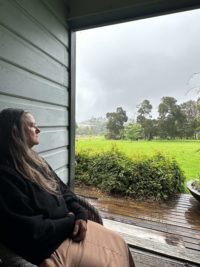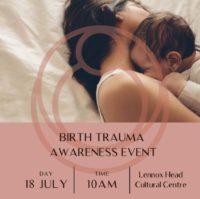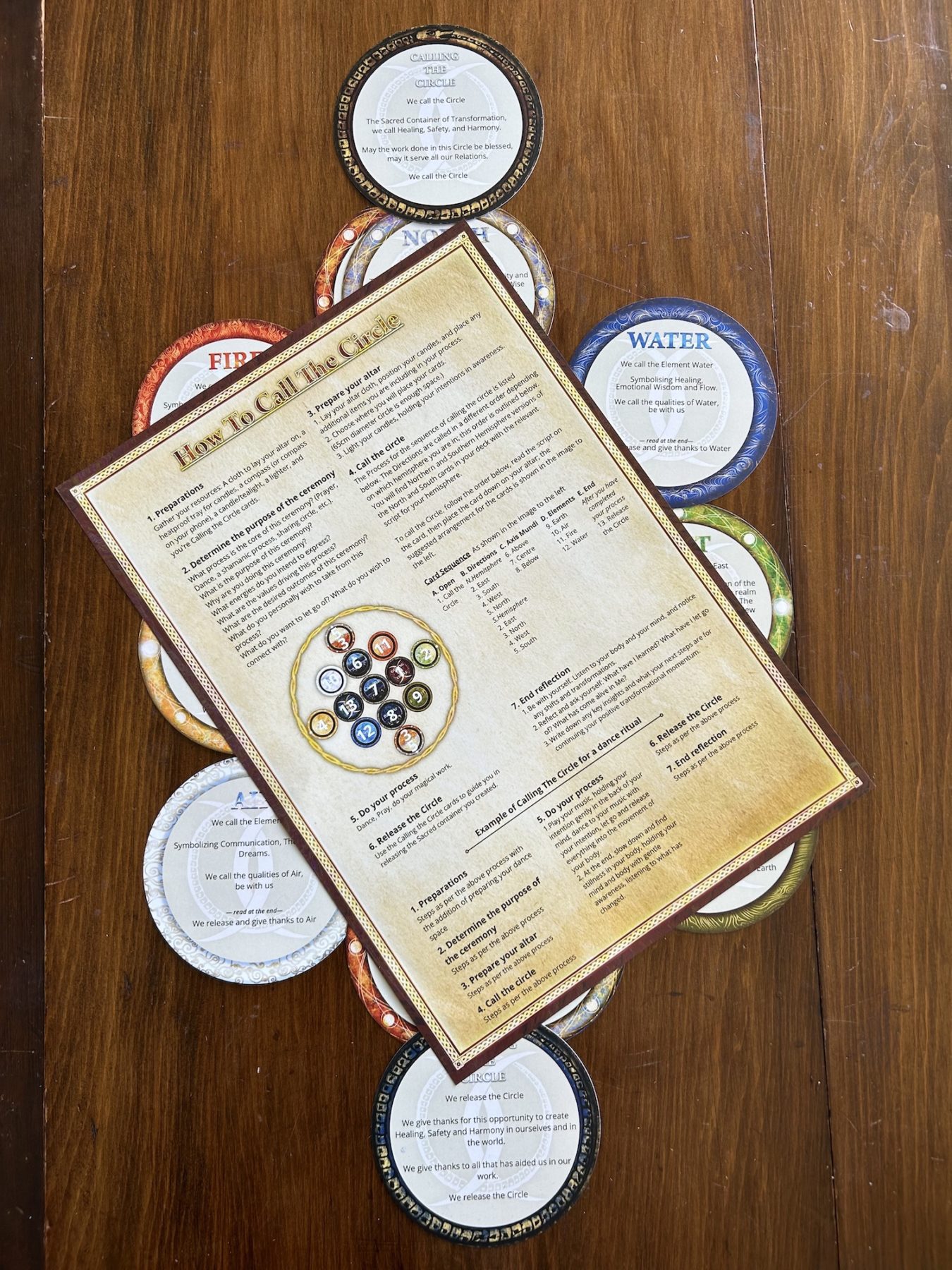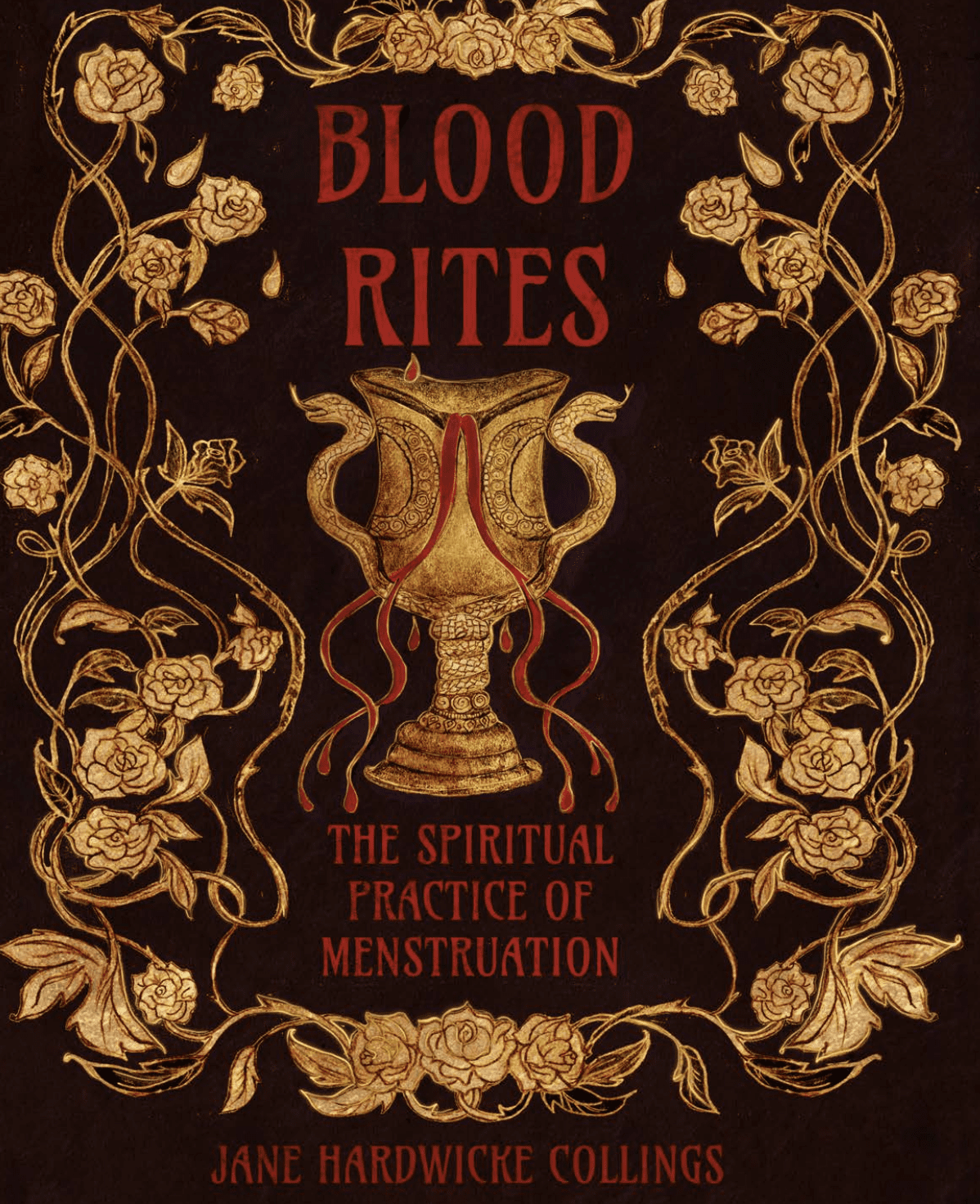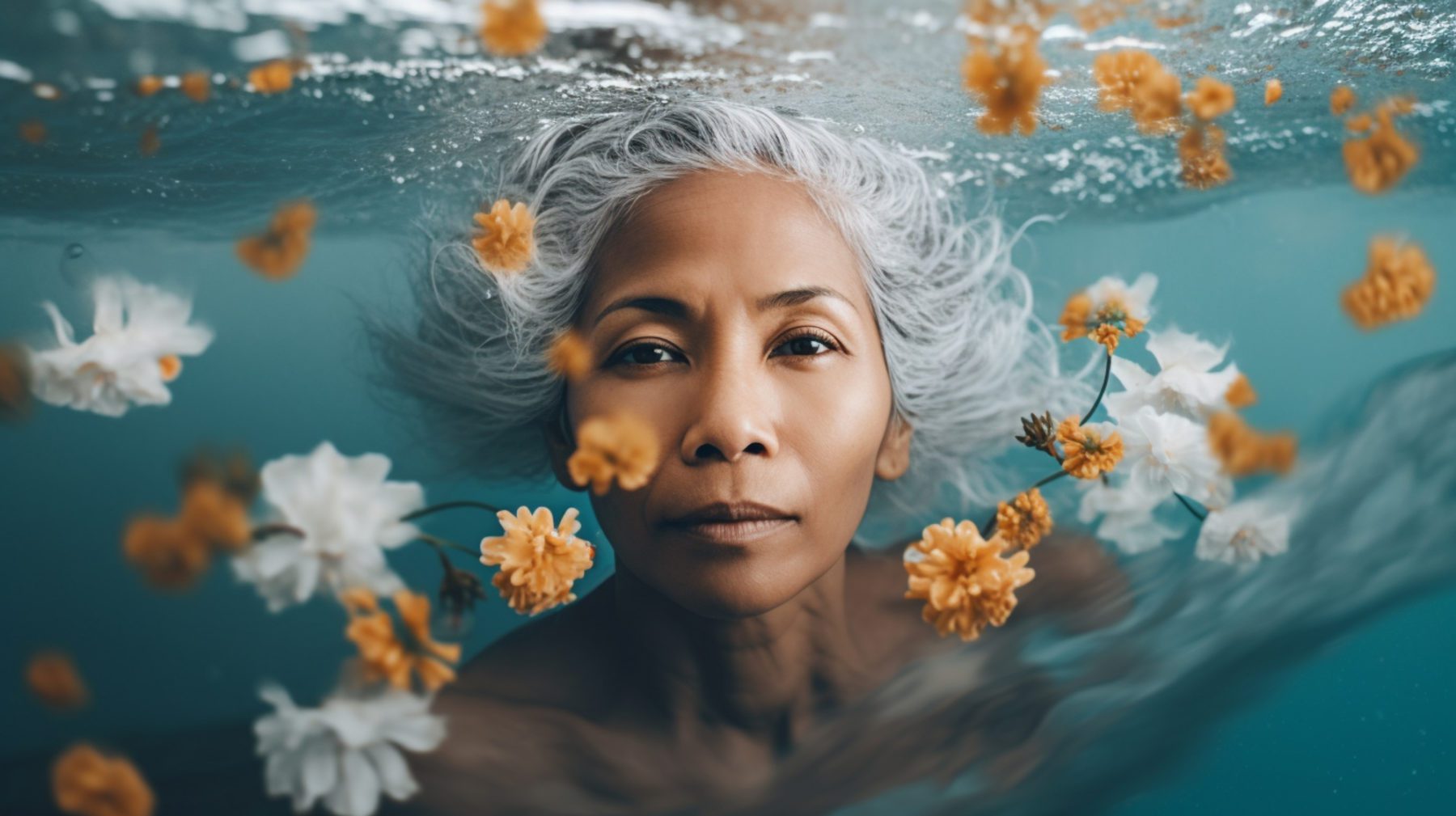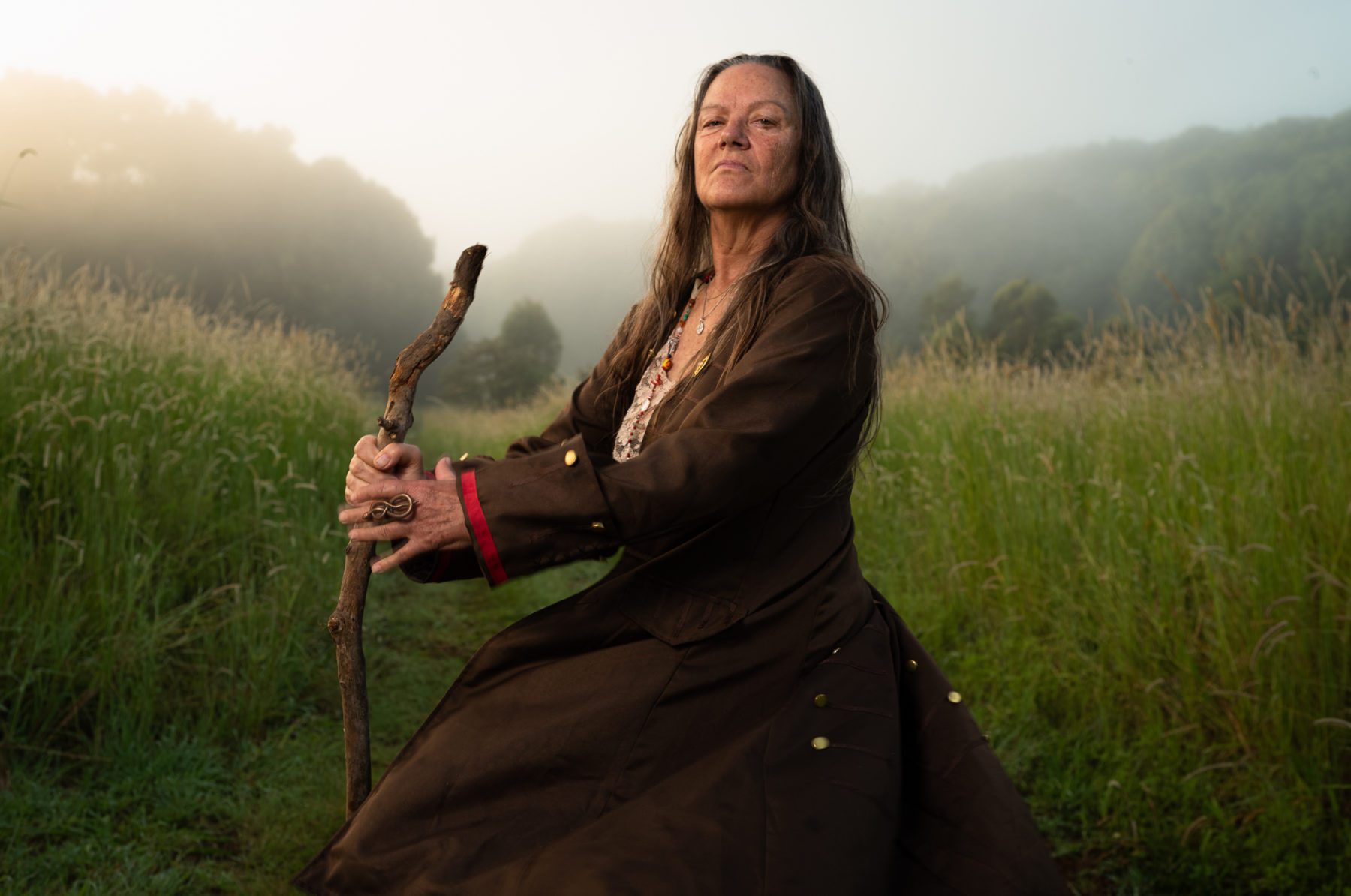AUTUMN WOMAN, HARVEST QUEEN
After Mother, before Crone…
is the time of the Maga – the Matriarch, the Enchantress, the Harvest Queen!
Winter 2015
As I sit here perched on this transformational ‘Altar of Womanhood,’ somewhere in the midst of becoming the next version of me, I feel I can now speak to Her as an initiate… My intention is to share things I know, along with relevant and helpful information I have gathered, and things my own journey has taught me.
I will also suggest some options for daily practice to prepare you for or help you during your menopausal experience. For those of you at the threshold of this rite of passage, I hope this information is helpful. For those of you already deep in this journey, I hope this can help you to navigate what ‘is.’ And for those of you already cloaked in the wisdom cape… I honour you and your journey.
Let us explore the treasures of this season of our lives, the harvest, the joys and the responsibilities. Let us together reclaim this time in our lives for the gift it is for all our relations.
The Autumn of our lives
You will all have heard of the Triple Goddess, Maiden-Mother-Crone. This comes from a time when we had babies at 14, were grandmothers at 30 and dead at 45. Winter has long been known as the season of the Crone, a profound wisdom time, and the sacred turning inwards before death. Many women died before reaching menopause. So if a woman did reach menopause before she died, then she must be pretty close to death.
Thus, menopause was seen as the Winter of a woman’s life, and her wise Crone phase. Now, if we are well, we can live to 100+ years. At menopause, then, the average age being 45-55, we are just half way in our life’s journey, no longer at the Winter of our lives. Accordingly we are now starting to talk about the ‘Maga’ phase of life.
The Maga phase is the Autumn of a woman’s life, the season before Winter, the harvest time.
Evolution of the Triple Goddess
I’ve written about this Maga phase in my “Evolution Of The Triple Goddess” essay. Here is an excerpt:
When a woman arrives at her Maga season as Mother Nature intended, her children are older, well into their teens or having left home as young adults. Her children need her less and their process of separation has prob- ably already begun. The turmoil of this separation process combined with the labour pains of menopause truly does give the woman the opportunity to give birth to a new version of herself. Her role as Mother is very different now: her children need her less and may reject her as part of their individuation process.
For the woman who has mothered projects or nurtured her career, she has probably arrived at a place after her years and years of experience, of feeling the harvest. She knows what she knows and works at her job with a sustained focus. How this transitional period is negotiated and supported by family, friends and society will determine the way she comes through this rite of passage and who she will be on the other side.
The negative Maga is the ‘empty nester’. She is a woman who has lost her sense of self as mother and nothing else comes. Her life may feel empty, depressing and without meaning. She could, with this mindset, become a premature Crone – withdrawing from her life.
Or, she could hear with ‘the ears of her heart’ or her “third ear or intuition” (Jeannine Parvati Baker)[1] for what has “heart and meaning” (Angeles Arrien)[2] for her and direct her still very strong and potent energy wherever she chooses.
Many women in their 50’s pick up careers and interests from their Maiden phase that may have gone ‘part- time’ during their mothering. Some women start new ones. They have time now, focused time.
The Maga season seems to be a modern privilege and responsibility
The privilege: Our lives today are “cushy” compared to even 100 years ago. Machines have replaced many of the tasks that would have taken up most of our time to just survive. Cars, supermarkets and ovens have substantially changed the time it takes to get a meal on the table. We go to the gym for the exercise that we
would have gotten from daily life tasks. In some respects, this takes meaning away from our lives and in other respects it gives us freedom to use our time and energy in unlimited ways. This then leads to…
The responsibility: The Maga woman is needed as a strong conscience for the community and society. She can, as Cedar Barstow, one of my teachers, explained, “hear and tell the truth without shame or blame,” and “stand in her strength while staying in heart.”
Perhaps the essence of the drive ‘to give back’ comes from all that was ‘given’ to the Mother – a way for her ‘to give thanks’. Becoming the Grandmother she cares about the world her grandchildren will be born into and does all she can to help it be a safe, sustainable place. The Grandmothers of times past held the final say on such matters as war. If this were still the case, the world might be a different place now…
One way of mapping this very simply is to think about the nature of responsibility. The qualities of the four- fold Goddess can then be described thus:
Maiden ~ carefree Mother ~ responsibility
Maga ~ carefree responsibility Crone ~ responsibly carefree!
Perimenopause as a rite of passage
Perimenopause is the name used to describe the journey during the ’change of life’. Menopause is said to have occurred when there has been one year without bleeding, others say two years without bleeding. The bottom line that my journey has taught me is that it takes however long it takes.
Just like menarche – we never know when the blood flow will begin.
Just like birth – we never know when the labour will begin or how long it will take. Just like death – it comes when it comes.
So too, we never know when the last period will be, or how long it will take to not come again.
Menopause, like every other rite of passage in a woman’s life is not a disease and so doesn’t have or need a diagnosis, it comes when it comes.
Surgical and chemical menopause are somewhat different and happen as a result of removal of the ovaries or radiation therapy or chemotherapy, and ‘premature’ menopause can happen to some women.[3] These challenging variations nonetheless represent the unfolding of a woman’s journey, part of the sacred con- tract that she has ‘come for’, for herself and all her relations.
The rite of passage of perimenopause includes many and varied physical, emotional and spiritual symptoms. The most common physical symptoms are hot flushes, night sweats and chills, insomnia, mood changes and fluctuations, vaginal and bladder changes, itchiness, constipation, dizziness, dry eyes, burning mouth, hair loss, hair growth, headaches, migraines, memory loss, osteoporosis, cramps, arthritis, palpitations, decreased libido, depression, rage, and suicidal thoughts.
Some women have lots of these symptoms, some have little or few, some have none. The experience of perimenopause has been likened to prolonged PMS. Women who have experienced depression before, may again at perimenopause – for surely wherever you go, there you are!
As Dr. Christiane Northrup says: “menopause is designed to heal all the unhealed parts of you, that is the wisdom of menopause.”[4]
In her book “The Wisdom of Menopause,”[5] Dr. Northrup says that the symptoms of perimenopause can be likened to the labour of childbirth – with the birth this time being giving birth to yourself.
She calls menopause “the Mother of all wake up calls.” Everything that you have ‘swept under the car- pet’ comes up during menopause, for you to deal with, to face, to heal, to let go of and to learn from as you become the next version of you. Whatever needs to come up for you to be this next, healed version of you, will show itself as physical, emotional and spiritual symptoms.
Hot flushes!
One of the major recognised symptoms of perimenopause is hot flushes. While these are often treated as a pathology by medical practitioners, alternative opinions do exist. Susun Weed, herbalist based in the US, says of hot flushes (called hot flashes in America): “the healthier the woman the more flashes she’s likely to have, as she has a stronger life force moving through her.’’
Susun also speaks of hot flushes being part of the shift that occurs that enables the movement of kundalini energy up the spine, leading to enlightenment, “but not all at once,” as she says. The work of the kundalini energy rising, as felt by hot flushes, happens in each chakra as the energy ascends, showing the woman issues she needs to be with on her journey to the enlightenment that menopause offers.[7]
Vicki Noble describes hot flushes as ”preparing us to be healthy old women. It gives our body a raised temperature during the transition, which probably heals it of potential ills, such as the pervasive cancers that exist in the present moment. With all the pollutants and chemicals in the atmosphere, there are surely no guarantees for any of this, but please Sisters – enjoy and appreciate your hot flashes. Love your menopause. Like the bleeding time, it’s a kundalini experience. There has to be ecstasy in it. Tune in and let the Dark Goddess have you, and I know the outcome will be renewal.’’[8]
Perimenopausal alchemy!
Why are these symptoms happening? What causes them?
The physical symptoms of perimenopause arise mainly from the effects of the changing levels of oestrogen, progesterone, testosterone, follicle stimulating hormone (FSH) and lutenising hormone (LH), along with the state of your adrenals. Please remember here – your natural hormones are not some separate outside force – you are your hormones and your hormones are you. At menopause, oestrogen levels are 40-60% of pre-menopausal levels and progesterone is close to zero. The adrenals take over production of oestrogen and oestrone (another variation of the hormone) and can easily become depleted by this. Depleted adrenals often overreact giving rise to sudden sensations of anxiety, fear and nervousness.[9]
Ayurvedic Doctor Jimi Wollumbin asks women who are pre-perimenopausal:
Do you need caffeine to get through the day? Have you used cortisone for long periods of time? Have you ever had chronic fatigue? Do you have trouble sleeping? Are you a bit of a worry-wart? Did you do copious amounts of ecstasy or speed in your misspent youth?
Dr. Wollumbin says that if you answer yes to any of these questions then NOW is the time to invest in your health so you can sail through menopause. Contrary to popular belief, menopausal physical symptoms aren’t so much about reproductive hormones, but adrenal health.
After a woman stops ovulating her adrenal glands become the primary producers of oestrogen. This is why exhausted, burnt-out women often have such a tough time.
While it is easy to focus solely on the physical symptoms of perimenopause, there are in fact amazingly pos- itive impacts of changing hormonal balance. At menopause our FSH and LH levels rise to the levels that we experienced at ovulation and stay there. These levels are a thousand times greater than they are at any other point in the life cycle!!
Our elevated FSH and LH have a new role, serving as extra neurotransmitters in the right side of the brain. The effects of this are increased creativity, intuition and visionary experiences. [10]
Dr. Northrup says these new and constant levels drive the changes taking place in the woman’s life at this time.[11] Throughout our reproductive years, the hormones that dominate our system keep us in a mental, psychological and physical space that is based on attracting a mate and caring for our children and others.
During this time we are more likely to compromise our needs and desires in order to maintain the support we have. We often lose sight of our individual goals: our primary focus is to maintain balance and keep the peace, for the sake of the family. And we are greatly rewarded for this behaviour, these hormones cause us to feel good.
At menopause as these hormone levels shift dramatically, the nurture role subsides and women begin to choose where they focus their energy. There are major alchemical changes that arise with changing hormone balance, that extend far beyond physical symptoms.
During perimenopause, it is as if a veil lifts. One thing that often happens is that women recall and decide to confront past abuses and losses.[12] Due to the biochemical and hormone changes at perimenopause, a woman’s “buried traumas and unresolved issues come into the light.”[13] These show up as physical or emotional symptoms that cannot be ignored.
The perimenopausal woman can be reflective and see these experiences in her life anew, and begin, if she hasn’t already, the deep healing she needs, as well as seeing the larger meaning, the greater purpose of these experiences and emotions in her life story. At perimenopause “we are now strong enough, deep within, to allow the pain and the secrets of the past to rise to the surface and be cleared out for once and for all.”[14]
The new hormone levels of perimenopause “prime the brain for new perceptions and new behaviour.”[15] Of- ten what surfaces is anger and it is expressed in a new found way of clarity that we may have been unable to express before. Sometimes just irritability surfaces, or perhaps grouchiness, aggravation, envy, overwhelm, or depression.
These may show up as high blood pressure or headaches, but as Dr. Northrup notes, it’s all anger and it’s a powerful signal from our inner wisdom. She says: “at perimenopause, the rewiring of a woman’s brain
makes her vision clearer and her motivations easier to identify. Using anger as a catalyst for positive change and growth is always liberating.”[16] Unfortunately, these feelings and many others are often seen as unwel- come visitors. A lot of women are medicated to soothe them, to make them feel better, when actually the opportunity is to ask – what is out of balance here that needs to be changed?
Old habits surface for re-evaluation. Do you really want to keep drinking as much alcohol as you are? Do you really want to keep smoking, drinking coffee, eating chocolate and lots of carbohydrate foods etc. etc.?
These habits are usually what we have adopted over the years to rev ourselves up, or calm ourselves down. They are habitual responses for dealing with the past and present stresses in our lives.
One of the most important things to address at this time is your diet, your nutrition. We need certain proportions of protein, fat and carbohydrate for our bodies to function as they are designed. For example, many of our habitual responses have huge effects on our blood sugar levels. Our blood sugar levels in turn greatly affect our energy levels and our moods. Unbalanced eating and excessive carbohydrates can lead to insulin resistance that leads to more fat production, especially around our middle. Stress affects our whole system, we make more cortisol or adrenaline, which in turn affects our oestrogen, progesterone and testosterone production, and this all affects how we feel and how our body works, or doesn’t. It’s a vicious cycle and one we get the chance to notice and do something about at perimenopause.[17]
Symptom relief?
I personally think a drug free rite of passage is the main commitment to make. Just like childbirth and for all the same reasons. This requires a commitment to nourishing yourself on every level.
One aspect of my personal approach to nourishment includes the regular use of herbal infusions, particularly nettle – check out Susun Weed’s suggestions in The New Menopausal Years.
Factors that make the symptoms worse include:
- Adrenal fatigue
- Poor nutrition
- Caffeine, alcohol, smoking, not enough sleep
- Long term physical deficiencies
- And psychologically, “…any aspect of our past that we have difficulty releasing can make menopausal symptoms worse,” [18] as is the same with
What should we do about them?
Choose to see the symptoms as the gifts they are, messages from your body and your soul to take you deep within to what lies beneath, above and around all that you experience. It’s all in the interpretation. Learn about what your body needs to function best – nutrition, rest, movement, meditation, lifestyle changes.
Re-negotiating relationships is often a huge aspect.
Dr. Northrup says in the DVD Menopause and Beyond: “Perimenopause is a crossroads, one road says Grow, and one road says Die.” She advises women to engage a process of “…befriending and mindfully sur- rendering to our most dreaded emotions (to) discover the heart’s native intelligence. You can handle these emotions, you can handle what comes up, but first you have to be willing to feel it.”
She recommends women who are experiencing the lost feelings associated with the ‘empty nest syndrome’, to recall what they were interested in during their time pre-menarche, prior to the time when their hormones changed their life focus.
Susun Weed says: “Do not expect predictability,” rather “when menopausal symptoms are understood as energy movement, a woman feels more at ease. Instead of feeling victimised by her body, the menopausal woman can use her symptoms as a way to pinpoint areas that need special nourishment. Quiet time alone in nature, or sitting in a comfortable chair listening to soothing music, allows thoughts and feelings to arise and opens the way for the flow of kundalini.”[19]
Weed says: “your identity as Mother dies, let yourself break all the rules. Be someone totally different than you thought you could be.”[20]
Lara Owen and Susun Weed have both written about the Woman’s Sabbatical, a year away during the menopause transition. This is a time dedicated to what ‘is,’ the big change, fully immersing oneself in the experience and allowing it to do its magic.
The big message here is basically all about surrender and balance. Yin and yang balance, parasympathetic and sympathetic nervous system balance. We need to find what that is for ourselves, and it’s probably a lot less time ‘doing’ and more time simply ‘being.’
Diverse information that I have gathered
Human women, Pilot Whales and Orcas (Killer Whales), are the only creatures who experience menopause.
A nine year study of Orcas led by Lauren Brent of the University of Exeter has revealed that menopausal females usually lead their families during salmon hunting, particularly during times of scarcity. Older fe- males have been shown to play a key societal role by storing critical ecological knowledge that may help their clans survive during famine periods.
This evolutionary benefit could explain why female Orcas live decades beyond their reproductive capacity– much like humans! The researchers note that Orcas represent a “species where information is stored in individuals” as opposed to external information sources (such as books or the Internet for humans). Thus these whales may provide insight into the forces that have shaped our own evolutionary history.[21]
Evolutionary Biologists argue over why human women experience menopause and what it tells us about our species. In fact their question is, why do women live longer than their fertility?
What a loaded question! What does this actually imply beneath the question? That women are of no use after they cannot have babies?! This unbalanced perspective seems to underlie the attitudes that dominate in our culture. There are however, various helpful hypotheses addressing this question. These include the ‘Grandmother Hypothesis,’ ‘Game Theory’ and the ‘Mother Hypothesis.’
In 1997 Kristen Hawkes proposed the ‘Grandmother Hypothesis,’ a theory that explains menopause by citing the under-appreciated evolutionary value of Grandmothering. Hawkes says that Grandmothering
helped us to develop a range of social capacities that are foundational for the evolution of significant human traits, including cooperation, pair bonding, the ability to learn new skills, and development of bigger brains due to increased social interaction.
Unlike other primates, human babies are not able to feed and care for themselves immediately after wean- ing. The hypothesis demonstrates that Grandmothers acting as supplementary caregivers, by feeding and nurturing children before they are able to themselves, enables mothers to have more children and increases the overall survival rate of offspring.
The ancestral females who initially were able to live to postmenopausal age increased the survival rate of their grandchildren and thus were more likely to pass on their genes favouring longevity. This arguably led to the species as a whole evolving longer lifespans. From a social perspective, this hypothesis says that Grand- mothering provided a kind of upbringing that increased group social dependence and made us prone to engage each other’s attention.[22]
Another theory is ‘Game Theory.’ Michael Cant and Rufus Johnstone from the University of Cambridge in England, used ‘Game Theory’ to argue that “menopause is early cessation of reproduction that originated through reproductive conflict between generations. In most cooperatively breeding species, reproduction is suppressed in younger females, who act as helpers to older reproducing females.”,[23] By contrast, in human social groups the older ones stop having babies.
While there are other primates that exhibit a post-reproductive lifespan humans are unique in having no overlap in reproduction between generations. On average, women stop breeding when the next generation starts to breed. ‘Game theory’ demonstrates that the older woman’s best strategy is to avoid competition, stop breeding, and help to facilitate the younger woman to breed successfully.[24]
The ‘Mother Hypothesis’ argues that menopause occurs because older mothers might gain greater genetic benefit by investing energy and resources in their existing children, rather than giving birth to new ones.
Researchers at the Max Planck Institute for Demographic Research in Rostock, Germany, make the case for this in the American Journal of Physical Anthropology (AJPA). They conclude that “menopause is advantageous when a woman has aged to the point where there is an increased risk of birth defects, stillbirth, and her own death in childbirth.”[25]
Our current cultural perspective
Our patriarchal cultural perspective of menopause is easily seen by the dominant beliefs and practices around it. Women say they become invisible, attracting less or no attention when walking down the street for example. To be acceptable, visible, women feel a pressure to look a certain way that our culture holds as beautiful and desirable, certain ways that are impossible with ageing. Hair is dyed to hide grey, Botox
is injected to hide wrinkles, face-lifts and plastic surgery are used to ‘overcome’ the effects of ageing on the face.
There are many sobering and concerning statistics for women in this life stage. Here are but a few:
- Women aged 45 to 55 are 30% to three times more likely to have depression than women who have not yet reached that stage in [26]
- About two thirds of antidepressants and tranquilisers dispensed in the United States are prescribed to women. [27] Anti-depressants are even regularly used for treating hot [28]
- 60% of divorces are initiated by women in their 40s, 50s and 60s, the menopause [29]
Instead of looking within for what lies beneath the physical symptom or emotion, our culture medicates to suppress the symptoms. This is in fact the dominant cultural approach to most female processes. We can clearly see the same approach to menstruation and childbirth.
To me all this begs the questions posed by the conscious archetypal descent into the Underworld that we can do when we ask the questions asked in the great myth of Inanna:
Who am I when I am not…
Daughter, Sister, Lover, Mother, Career Woman, Wife, Homemaker/Priestess???
A perimenopause revolution is consciously evolving! Rather than masking their symptoms, many women are now reclaiming their menopausal experience and seeing what lies beneath their symptoms. They are asking and embodying the questions that need to be asked, of the most qualified experts… themselves!
The main issues seem to be around our bodies, our sexuality, and libido, our mind, moods, beliefs, fears, and grieving for what now will never be. In this changing space, everything feels different. As Elizabeth Davis says: “equilibrium is found not by struggling for control, but by surrendering to the change and seeing it through… Trust in the process largely determines the ease of its progression.”[30] She reassures us that “sweep- ing changes can and should occur at this time.”[31]
Susun Weed writes of the personal inner work of the journey through perimenopause being about grieving.
[32] It has been said that the work of pregnancy is worrying, and that speaks to the fact that bringing aware- ness to your worries during pregnancy can show you your fears, and acknowledging your fears and working with them at their root cause can alleviate those fears and what they may bring. Such is the opportunity of grieving at perimenopause.
We grieve for what may have been, what could have been, what ought to have been, what should have been and now never will. We grieve our youthful bodies, the babies we didn’t have, the blood that will no longer flow.
In this process we also tap into the wounds of our own Mother Line, our Red Thread, our ancestors and all women. We heal, for all our relations, and we step forward into the next stage of our life… anew.
In Traditional Chinese Medicine, menopause is aptly called the ‘Second Spring’[33] This speaks so beautifully of the possibilities of the space that opens up after the journey of perimenopause.
Things I know
I know that one thing leads to the next, and whatever happens at the beginning of something effects how it unfolds. This is the case with our rites of passage as well.
How we are born configures our life, and how we engage with whatever we are doing or birthing. This in turn impacts our menarche, which impacts our menstrual experience, which impacts our experiences of birthing – babies or projects, which all impact our menopause, which all together impact our death, which impacts our next life!
Our rites of passage are not ‘sentences’, they are what we came for. Within them they hold the opportunities for the growth and healing this lifetime is about – the soul crafting.
Rites of passage serve many purposes, most particularly they create culture and they reinforce it. What ever happens around, during and after a rite of passage, such as your birth, menarche, giving birth – each time – and your perimenopause, informs you about how your culture values the next role you are entering – be that womanhood or motherhood or wisewomanhood.
What happens informs you about how you are expected to behave in that role. This happens mostly subliminally, subconsciously, so you don’t even consciously realise these effects. The effects will show up however in your attitudes to yourself and your fears, how you act and behave, and in your expectations.
What my journey has taught me
I have learned so much about myself, and my enculturation (aka brainwashing!), by my desire to alleviate my perimenopausal symptoms.
I was busily researching everything I could take – HRT was out of the question, but what about biowidenti- cal hormones, herbs, acupuncture, etc.??? After a while this felt familiar to me, and I realised I was trying to avoid the symptoms because I didn’t want to feel the feelings that lay beneath them, an old pattern of mine.
I have learned and changed so many things I do over these past 5 years, things I never thought I would change and things I didn’t think I even wanted to change. The intelligence of my body and the opportunities this lifetime presents to me have taken over my small-minded attachments.
I saw at the beginning of my experience of hot flushes, that often I would be thinking a toxic thought – say, judgment or some well practiced negative perspective of myself – and a hot flush would come on and rage.
It felt like I was burning off that perspective! I saw that, like the bush I live in, the greater the forest floor ‘litter’ – the parts no longer needed for growth – the hotter and brighter and more intense the fire.
I have learned that I am ready now to face the things I haven’t been ready to before. One of the ways this is showing up is via my blood pressure. My blood pressure has been calling me for many years and I have basically ignored it. My blood pressure is high due to the imbalance of the time I spend in my parasympathetic and sympathetic nervous systems. What I need to balance this, and therefore my blood pressure, is to spend more time in a parasympathetic state, more ‘being’ than ‘doing’.
In examining this, I have found something quite amazing. My birth imprint – a drugged birth where for the middle third of the labour my mother was unconscious – holds the clue for what I need to do now at this rite of passage!
The medicine for the ‘ills’ I am experiencing at my menopause, is to consciously live the pattern that was set up at my birth. And the ‘how to’ is to apply the lessons I learned, the gifts of, my birthing experiences– surrender, trust and finally presence – to balance my nervous system and relax myself right down to my capillaries.
Rites of passage are like portals and they link us to our life story, purpose and medicine.
Within the story and the experience of each of our rites of passage are the patterns that are playing out in our lives and information that can help negotiate them, be that in the healing and reclaiming of those past or the awareness and insights to take to the next.
Daily Practice
How we care for ourselves during the rite of passage of perimenopause sets up our health that will carry us into our old age. Maintaining a daily holistic body-mind-spirit practice is so important.
This list is adapted from Paul Chek’s 6 Foundational principles of holistic living.[34] The aim is to seek to balance yin and yang for all six physical principles.
- Thoughts – watch and change as necessary your thoughts and attitudes, Meditation, mindfulness practice;
- Breathe into your belly – 60% of detoxing happens with your breath, 30% through skin, 7% urine, 3% faeces;
- Hydration – body weight in kg x 033 = amount in litres needed if you are lying down all day. Eg 65kgs needs 2L and then you need to add more according to the amount of movement you do;
- Nutrition – eating according to your primal pattern ratios, organic food, no processed food;
- Movement – quality and variability are important, movement = nutrition for your body;
- Sleep – asleep by 10:30pm, 8 hours is All physical repair is done between 10pm and 2am, psychological healing is done between 2am – 6am.
A spiritual practice is also essential, some suggestions include:
- Journal your experience
- Meditate daily
- Spend as much time in nature as you can
- Do blood prayers and moon prayers
- Honour the seasons
- Spend time alone
- Notice what arises, give thanks for it and work with it
- Spend time with women in circle, sharing your stories and learning from each other
In the Secret Pleasures of Menopause, Dr. Northrup encourages us to seek pleasure and joy, and to have fun as self care practice during perimenopause and beyond. She explains that our body and brain is “bathed in a constant supply of nitric oxide, an amazing molecule… that determines physical, emotional, spiritual and sexual wellness in menopausal women.” Nitric oxide “reboots your body, it’s the spark of life.”
So, how can we increase our nitric oxide levels? Cultivating practices include: positive thinking; taking pride in yourself; understanding that sex and health go hand in hand (and having as many orgasms as you can); pampering yourself; getting plenty of exercise and eating nutritious foods
It is important to invite pleasure into your life – all the time. So practice thinking sexy, uplifting and loving thoughts about yourself and others every day, and associate with positive people everywhere you can.[35]
Speaking to your inner Autumn Woman
Consult your inner wisdom by speaking to your inner Autumn Woman, your Harvest Queen self, the She of this place in the timeline of your life. She will exist even if you are not in this stage or if you are past it. You could do this through meditation, dance, a drum journey or visualisation.
You can ask her:
- What do I need to let go of?
Perhaps it’s a way of being or a perspective or a dream or wish, something that now will not ever be, because you are moving or have moved into this next phase of your life.
- What do I need to let go of so I can flow more simply through the process of becoming the Wise Woman version of myself?
- What quality do I need to call forth, or practice I need to begin, or continue, to be the woman I can be?
Sisters, you hold all your answers within! So, embrace your own wisdom and boldly follow your own authentic path through this transformational rite of passage.
I would like to finish with an old Native American quote:
At menarche a woman enters her power.
In her menstruating years she practices her power.
At menopause she becomes her power.
Blessed Be!
Seasons of the Witch (excerpt from Fall), by Patricia Monaghan
“As she moves through autumn, a woman feels a passionate connection with all life. Yet, wise in the seasons of living, she can be unsentimental, even pitiless. She does not try to nurture everything and everyone, for she knows not all can – should – survive. She becomes selective. There is enough of everything – strength, love, passion, lust – everything but time.
Time she knows grows short. Nothing seems endless anymore. Her life grows full of endings: parents and friends die, animals she has loved disappear in a gasp, dreams fade beyond reclaiming. She does not recognise, when the death starts that fall has begun. But later she will remember: After that one, it was never the same.
Never again will she hold a living body without knowing the fragility of its life, the closeness of its death.
She finds she has limits. Her energy falters, her mind drifts, her patience snaps. She begins to husband her- self, to save herself for what really matters. She has seen enough to guess the trajectory of most events, to hold herself back from repeating old mistakes. She knows now that some energy is wasted. So sometimes she seems parsimonious, unwilling to expend in waste. But other times she is generous. That old coat? Give it away. That
pretty pin? Oh, do take it. The half-finished book? No, it’s yours. She does not need to cling to what she has out- lasted. Things leave her: she does not need it all.
Fall consumes a woman many times before and after middle life, whenever the time demands that she become decisive. She empties her womb of conception; she leaves a convent, a marriage, a career; she puts a loved
old pet to sleep. She cleans a closet, gives away old books, cuts off her hair. Autumn moods find her free and vibrant, impatient of delusions, ready to do whatever she needs to do. For she knows what she needs, and she wants it fiercely. For every false dream that dies, a true one is remembered. She climbs mountains to stand in alpenglow, she gallops out on a magnificent horse, she paints her secrets and nightmares. She bears a last and cherished child; she remembers passion with an old friend; she writes her own, her individual story. She knows what memories she needs to store, to provide her winter years.
The autumn woman moves towards dreamtime. Though she knows her limits, she has also felt limitless.
She has known the ineffable. She wakes at night from dreams of high windy places where small blue flowers bloom, and she knows in her bones that such places exist. Luminous beings appear in her dreams and pull her towards them. She recognises the dust of infinity in a windstorm, the fragrance of timelessness in a fire.
There is a transcendent energy about her, but she remains rooted in life’s imminent realities. In her eyes you see the fire of primal knowledge: the knowledge of life and death. She knows that she will not escape this life alive. And so she embraces it, moment by moment.”[36]
ARTICLE REFERENCES
[1] Jeannine Parvati Baker, 2004, personal communication
[2] Angeles Arrien, The Four Fold Way: Walking the Paths of the Warrior, Healer, Teacher, Visionary. Harper Collins: 1993
[3] Premature menopause means a woman’s ovaries have spontaneously stopped working before she has reached the age of 40 years. Women can be affected in their teens or early 20s. About one in 1000 women reach menopause before the age of 30. Some possible causes include:
- Unknown causes – in the vast majority of cases, the cause can’t be This is known as idiopathic premature menopause.
- Autoimmune conditions – about 10 to 30 per cent of affected women have an autoimmune disease such as hypothyroidism, Crohn’s disease, systemic lupus erythematosus or rheumatoid
- Genetic conditions – such as familial ovarian failure (FOF) and rarely About five to 30 per cent of women have an affected female relative, which suggests a genetic link, such as:
- Galactosaemia is when the body cannot convert the carbohydrate galactose into glucose. It is thought that the unconverted galactose could be toxic to the
- Conditions characterised by enzyme problems, such as congenital adrenal hyperplasia, can also bring on premature
- Other genetic conditions, such as Turner’s syndrome, where a chromosomal abnormality can cause ear- ly menopause, but this is usually evident before Fragile X syndrome may be another cause.
- Viral infections – the evidence is inconclusive, but it is thought that a viral infection, such as mumps or cytomegalovirus, could trigger premature menopause in some women. Some possible causes include:
https://www.betterhealth.vic.gov.au/health/ConditionsAndTreatments/premature-and-early-menopause
[4] Menopause and Beyond by Dr C. Northrup, video
[5] The Wisdom of Menopause by Dr C. Northrup, Piatkus, UK
[6] [7] New Menopausal Years: the Wise Woman Way by Susun S. Weed, Ash Tree Publishing, Woodstock, New York, USA. p. 85
[8] Shakti Woman by Vicki Noble, Harper San Francisco. P36
[9] New Menopausal Years, Weed, p. 121
[10] The Rhythms of Women’s Desire: How Female Sexuality Unfolds at Every Stage of Life by Elizabeth Davis,
Hunter House, USA, p. 155
[11] Wisdom of Menopause, Northrup, p. 49
[12] Wisdom of Menopause, Northrup, p. 52
[13] Wisdom of Menopause, Northrup, p. 69
[14] Wisdom of Menopause, Northrup, p. 70
[15] Wisdom of Menopause, Northrup, p. 53
[16] Wisdom of Menopause, Northrup, p. 54
[17] Is it Me or My Hormones by Marcelle Pick, Hay House, p. 29
[18] Rhythm of Women’s Desire, Davis, p. 155
[19] New Menopausal Years, Weed, p. 96
[20] New Menopausal Years, Weed, p. xii
[21] http://news.sciencemag.org/biology/2015/03/menopausal-killer-whales-are-family-leaders
[22] http://www.smithsonianmag.com/science-nature/new-evidence-that-grandmothers-were-crucial-for-hu-
[23] http://www.scientificamerican.com/article/the-origin-of-menopause/
[24] http://www.scientificamerican.com/article/the-origin-of-menopause/
[25] http://www.scientificamerican.com/article/the-origin-of-menopause/
[26] https://www.menopausecentre.com.au/depression/
[27] http://www.anapsid.org/cnd/gender/genderdrug1.html
[28] https://www.webmd.com/menopause/guide/menopause-symptom-treatment
[29] http://www.healthywomen.org/content/blog-entry/will-your-marriage-survive-menopause
[30] Rhythm of Women’s Desire, Davis, p. 154
[31] Rhythm of Women’s Desire, Davis, p. 155
[32] New Menopausal Years, Weed, p. 119
[33] http://vitalitymagazine.com/article/second-spring/
[34] http://www.femaleforlife.com.au/Lifestyle/The-6-Foundations-of-Health.html
[35] http://www.menopausetheblog.com/2008/10/10/recommended-reading-dr-christiane-northrups-new-
book-on-the-secret-pleasures-of-menopause/
[36] http://www.patricia-monaghan.com/seasonsofthewitch105850.html
Recent Posts
What can we do?
January 25, 2024 What can we do? At this full moon, when everything feels and is more intense when I look at the state of [...]
My Vision for Menopause
DOWNLOAD PDF VERSION MY VISION FOR MENOPAUSE I would like to offer my perspective and my vision to the conversation that’s happening about [...]
Birth Trauma Week – Presentation and Perspective
Birth Trauma Week Panel - July 18th 2023 My contribution to this panel is to put childbirth and birth trauma in context, with a big [...]
Introducing Sagescence – Understanding the becoming of a wise woman – Reframing perimenopause and menopause
DOWNLOAD PDF VERSION DOWNLOAD FRENCH PDF VERSION Introducing Sagescence Understanding the becoming of a wise woman. Reframing perimenopause and menopause. We know the [...]
The 2020 Mothers and Babies Report: an inconvenient truth.
The 2020 Mothers and Babies Report: an inconvenient truth. Trigger warning for those who have had an induction of labour, an augmentation of labour (labour [...]
Protected: Hygieia Health Birth Houses
This content is password protected. To view it please enter your password below: Password:
Visit the Shop


